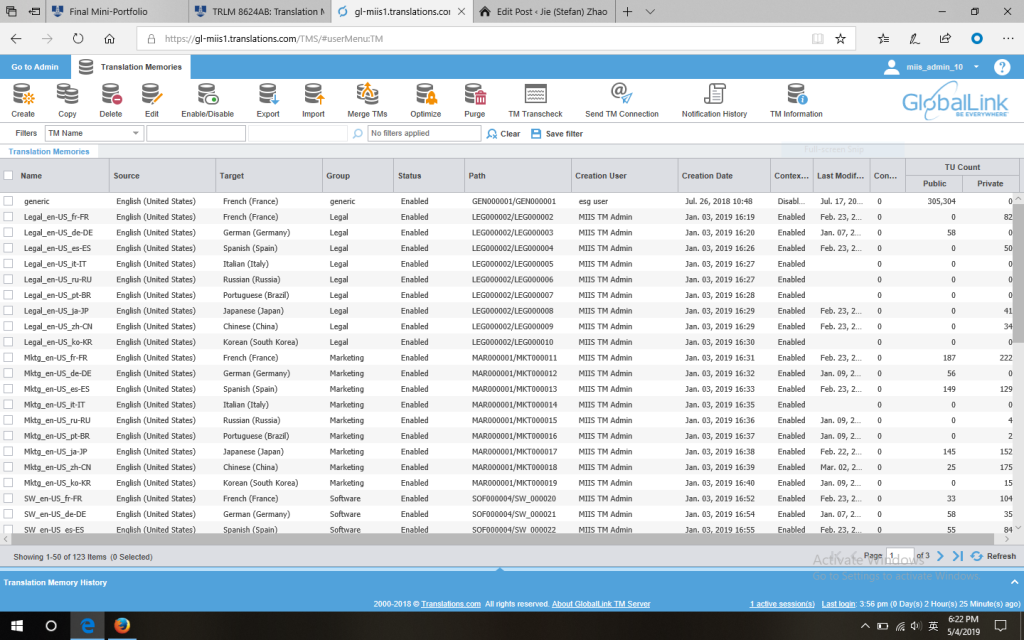This semester in Translation Management Systems (TMS), we learned several TMSs, including SDL WorldServer, GlobalLink, Lingotek, and Unify. They are all very advanced tools and I learned many technical skills from using them.

Based on what we leanred, we did two projects: TMS Comparison Project and TMS Consulting Project. Here’s what we did in these two projects.
TMS Comparison Project
In this project, we were tasked with evaluating and selecting a TMS for a particular company. We not only need to compare several TMSs and make a choice, but also persuade the company to buy into our choice. So we came up with the following process.
Choose a Company
First, we need to choose our client. It needs to be a company that has a certain amount of global presence and is in need of a mature and advanced localization process. We chose Huawei, a major telecommunications equipment and consumer electronics manufacturer in China. It has its own localization department and a team of in-house translators. It doesn’t have a TMS, so we thought it could use one to make its localization process more automated and efficient.
Develop a Scorecard
Then we looked more into our client and identified its key business requirements. We developed a scorecard to weigh those requirements. In the scorecard, we divided the stakeholders into several different categories: finance, project manager, linguist, IT, and internal client. We assigned each weight with a numeric value: must-have (5), really-want (4), important (3), nice-to-have (2), and somewhat-trivial (1). Based on our evaluation, we gave each business requirement a weight.
Compare TMSs
After we did some research on our client, we came up with 3 potential TMSs: SDL WorldServer, GlobalLink, and Memsource. We decided to run a project from start to end in those 3 TMSs and compare the results.

For our source material, we pulled some contents from our client’s website and incorporated them into 2 Word documents: Huawei’s Global Industry Vision and a newsletter. We imported these 2 documents into the 3 TMSs and ran through the processes.
Project Presentation
After we finished running through the projects in the 3 TMSs, we made our observations into a presentation. In the presentation, we talked about our evaluation processes and results in the 3 TMSs. According to our evaluation, SDL WorldServer doesn’t meet the requirements of our client. GlobalLink is a potential candidate, but Memsource best suits our client’s needs. we came to these conclusions based on our calculation in the scorecard.

TMS Consulting Project
Later this semester, we looked into Unify, a newly-developed private TMS owned by inWhatLanguage. We tried their demo version and provided our feedback and suggestions on the functionalities and features of the tool.
Then we had a meeting with the client and gave a presentation on our experience using the tool. In the presentation, we acted as a consultant and offered the client our professional opinions on what the tool is good at and what aspects need improvement.
Conclusion
This course has taught me a lot. Not only did I learn the leading and trending technologies in the translation and localization industry, I also got to play different roles and carry out real projects for real clients. It has really prepared me for future work and given me a insider look at the prospect of our industry’s market.

